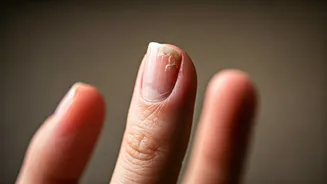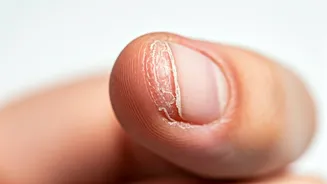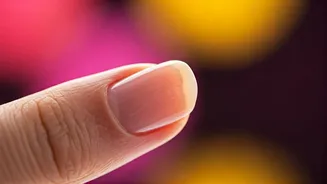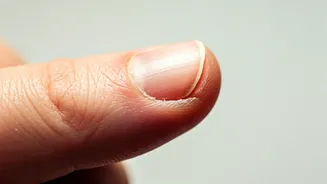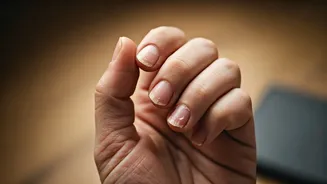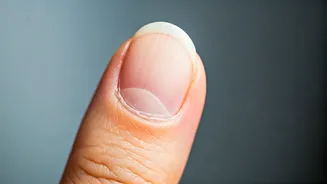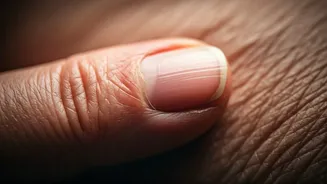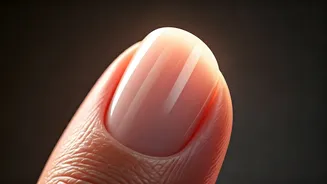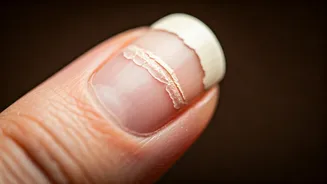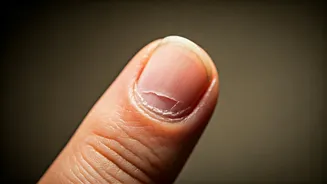Nail Peeling Overview
Nail peeling, characterized by the separation of nail layers, can stem from several underlying causes. One frequent culprit is dryness, arising from factors
like frequent handwashing, exposure to harsh chemicals, or low humidity environments. Furthermore, nutritional deficiencies, such as inadequate iron, zinc, or biotin intake, may contribute to brittle nails. Certain medical conditions, including thyroid disorders, psoriasis, and fungal infections, can also manifest as nail peeling. Understanding the potential causes is vital for effective treatment and preventative measures. This knowledge allows individuals to take targeted actions, whether it is modifying daily habits, consulting a healthcare professional for diagnosis, or adopting a suitable treatment strategy. A comprehensive approach helps promote nail health and overall wellbeing.
Common Contributing Factors
Several everyday habits and environmental elements contribute to peeling nails. Frequent exposure to water, like excessive handwashing or swimming, can strip the nails of their natural oils, making them brittle. The use of harsh chemicals found in cleaning products, nail polish removers, and certain soaps can also damage the nail structure. Overuse of nail polish, especially without proper base coats, can dehydrate nails. Moreover, nail trauma, such as aggressive manicuring, biting, or picking at nails, can weaken and peel the nail layers. Exposure to dry air, whether in cold climates or air-conditioned environments, also depletes moisture from nails. Identifying and modifying these habits can greatly assist in maintaining nail health. This includes wearing gloves when doing household chores involving water or chemicals, avoiding harsh products, using nail polish sparingly, and ensuring proper nail care techniques.
Medical Conditions Involved
Nail peeling may be a sign of underlying health problems. Thyroid disorders, whether hypothyroidism or hyperthyroidism, can affect nail growth and structure, resulting in dryness, brittleness, and peeling. Psoriasis, a chronic autoimmune disease, frequently affects the nails, causing pitting, thickening, and peeling. Fungal infections, like onychomycosis, often result in discolored, thickened, and peeling nails. Iron deficiency anemia, commonly caused by inadequate iron intake or poor absorption, can weaken nails, making them susceptible to peeling and breakage. In rare cases, more severe conditions, such as lichen planus or other dermatological problems, may manifest in nail abnormalities. Therefore, persistent or severe nail peeling warrants medical evaluation to rule out any underlying health concerns and receive appropriate treatment. This may include blood tests, fungal cultures, or a referral to a dermatologist for accurate diagnosis and management.
Treatment and Remedies
Treating peeling nails involves both addressing the underlying causes and providing direct care. For dry nails, moisturizing frequently with hydrating hand creams containing ingredients like hyaluronic acid, glycerin, or shea butter is essential. Avoiding harsh chemicals and minimizing water exposure helps preserve the nail's natural oils. Nutritional supplements, such as biotin, iron, or zinc, can strengthen nails, but it is best to consult with a healthcare professional before starting any supplements. Antifungal medications, either topical or oral, may be necessary for fungal infections. For conditions like psoriasis or thyroid disorders, specific treatment of the underlying condition is crucial, and a dermatologist can provide suitable remedies. In addition to these measures, practicing good nail care habits such as using a protective base coat, avoiding nail biting, and gently filing nails in one direction can promote nail health and prevent further peeling.
Prevention Strategies
Preventing peeling nails requires adopting a proactive and comprehensive approach. Maintaining proper nail hygiene involves keeping nails clean and dry, as well as trimming them regularly. Wearing protective gloves while doing chores that involve water or chemicals can prevent nail damage. Avoiding harsh soaps and detergents and opting for gentle, moisturizing alternatives will help preserve the nail’s natural oils. Additionally, maintaining a balanced diet rich in vitamins and minerals, especially biotin, iron, and zinc, will support nail health. Regularly moisturizing hands and nails with appropriate creams can counter dryness. Refraining from habits like nail biting and picking reduces the risk of nail trauma and promotes healthier nail growth. Implementing these simple yet effective preventive measures will significantly contribute to nail strength and overall wellbeing.
